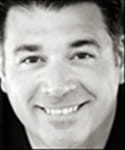Addison's Walk
- Published Oct 14, 2020
During my studies at Oxford, I would take an evening walk almost every day along Addison’s Walk on the grounds of Magdalen (pronounced “Maudlin”) College. A picture I once took along the way hangs above the desk where I write my messages, books and blogs.
Why did I take that nightly walk, and why does looking at a picture of it never tire?
The path runs beside several streams of the River Cherwell. It was a favored walk of C.S. Lewis, who taught at Magdalen. It was also just a short way from Merton College where J.R.R. Tolkien resided.
On Saturday, September 19, 1931, Lewis invited two friends to dine with him in his rooms at Magdalen. One was a man by the name of Hugo Dyson, a lecturer in English Literature at Reading University. The other was Tolkien.
On that fall evening, after they had dined, Lewis took his guests on a walk through the Magdalen grounds, ending with a stroll down Addison’s Walk. It was there they began to discuss the idea of metaphor and myth. Lewis had long appreciated myth.
As a boy he had loved the great Norse stories of the dying god Balder, and as a man, he grew to love and appreciate the power of myth throughout the history of language and literature. But he didn’t believe in them. Beautiful and moving though they might be, they were, he concluded, ultimately untrue. As he expressed to Tolkien, myths are “lies and therefore worthless, even though breathed through silver.”
“No,” said Tolkien. “They are not lies.”
Later, Lewis recalled that at the moment Tolkien uttered those words: “a rush of wind... came so suddenly on the still, warm evening and sent so many leaves pattering down that we thought it was raining. We held our breath.”
Tolkien’s point was that the great myths might just reflect a splintered fragment of the true light. Within the myth, there was something of eternal truth. They talked on, and Lewis became convinced by the force of Tolkien’s argument. They returned to Lewis’ rooms on Staircase III of New Building. Once there, they turned their conversation to Christianity. Here, Tolkien argued, the poet who invented the story was none other than God Himself, and the images He used were real men and women and actual history.
Lewis was floored.
“Do you mean,” he asked, “that the death and resurrection of Christ is the old ‘dying God’ story all over again?”
Yes, Tolkien answered, except that here is a real dying God, with a precise location in history and definite historical consequences. The old myth has become fact. Such joining of faith and intellect had never occurred to Lewis.
It was now 3 a.m., and Tolkien had to go home. Lewis and Dyson escorted him down the stairs. They crossed the quadrangle and let him out by the little postern gate on Magdalen Bridge. Lewis remembered that “Dyson and I found more to say to one another, strolling up and down the cloister of New Building, so that we did not get to bed till 4.”
Twelve days later Lewis wrote to his close boyhood friend, Arthur Greeves: “I have just passed on from believing in God to definitely believing in Christ—in Christianity. I will try to explain this another time. My long night talk with Dyson and Tolkien had a good deal to do with it.”
I probably don’t need to say anything more.
James Emery White
Sources
This narrative adapted from Humphrey Carpenter, The Inklings (New York: Ballantine, 1978), pp. 45-48, as well as my own time spent in Oxford and dialogues with Oxford folk.
About the Author
James Emery White is the founding and senior pastor of Mecklenburg Community Church in Charlotte, NC, and the ranked adjunct professor of theology and culture at Gordon-Conwell Theological Seminary, where he also served as their fourth president. His newest book, Christianity for People Who Aren’t Christians: Uncommon Answers to Common Questions, is now available on Amazon or at your favorite bookseller. To enjoy a free subscription to the Church & Culture blog, visit ChurchAndCulture.org, where you can view past blogs in our archive and read the latest church and culture news from around the world. Follow Dr. White on Twitter, Facebook and Instagram @JamesEmeryWhite.
The views expressed in this commentary do not necessarily reflect those of CrosswalkHeadlines.
James Emery White is the founding and senior pastor of Mecklenburg Community Church in Charlotte, NC, and a former professor of theology and culture at Gordon-Conwell Theological Seminary, where he also served as their fourth president. His latest book, Hybrid Church: Rethinking the Church for a Post-Christian Digital Age, is now available on Amazon or from your favorite bookseller. To enjoy a free subscription to the Church & Culture blog, visit churchandculture.org where you can view past blogs in our archive, read the latest church and culture news from around the world, and listen to the Church & Culture Podcast. Follow Dr. White on X, Facebook and Instagram at @JamesEmeryWhite.



















